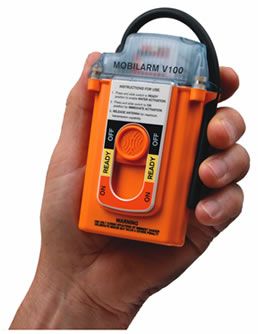
After testing for this article was completed, two new MOB alarm products took aim at the U.S. market.
Still awaiting FCC approval, the 4.2-ounce SafeLink R10 from Kannad Marine (www.kannadmarine.com) has a 2-watt transmitter that operates on the VHF frequencies used by AIS (Automatic Identification System). Equipped with a built-in GPS receiver, it sends a structured alert message, GPS position data, and a special identity code to AIS receivers within about four miles. The position data is updated every 60 seconds. (The first alert, 10 seconds after immersion, contains no GPS data.) Battery life is 24 hours, with a storage life of seven years. The beacon must be manually activated, but it can also be professionally installed to activate when an inflatable life jacket inflates. Retail price is set at $349.

Another item worth watching is the 5.4-ounce V100 from Mobilarm. Also equipped with a GPS receiver, the V100 automatically activates when wet. It can also be switched on manually. When activated, the V100 sends the GPS position of the man overboard every five minutes for 30 minutes, and then every 10 minutes until the unit is turned off or the battery expires. An “open-loop” system that transmits the DSC alert to all ships in the area is approved for use in some countries, and this feature—with a 30 minute delay—is expected to be approved for the U.S. soon.
Unlike the Crewsafe system, it does not transmit a 121.5 MHz homing signal. However, Mobilarm purchased Marine Rescue Technologies, makers of the Sea Marshall system, last month and plans to roll more 121.5-MHz technology into its product lines.
Both products deserve close watching, and Practical Sailor will be testing them for an upcoming issue.



































